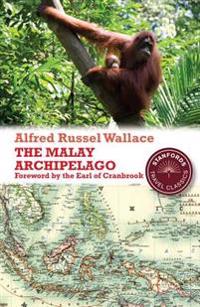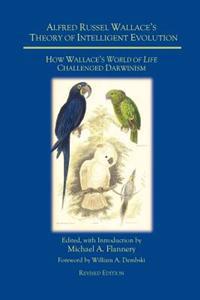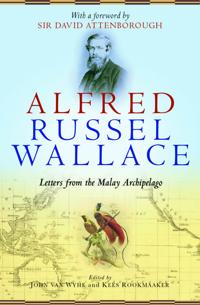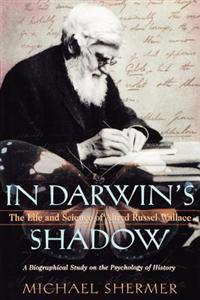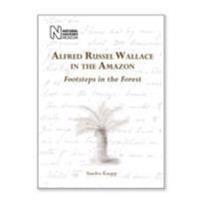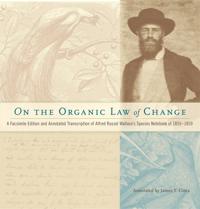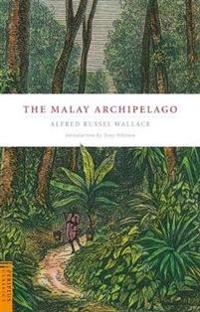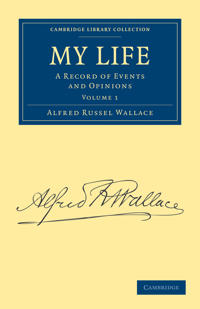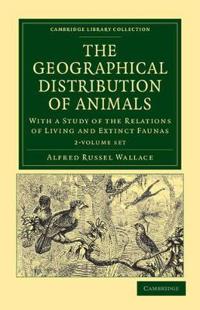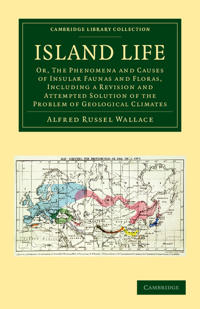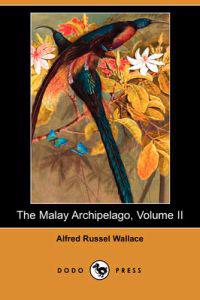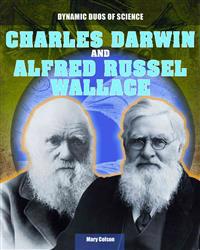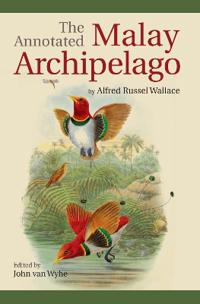The Malay Archipelago (Häftad)
avAlfred Russel Wallace, Alfred Russel Wallace, Alfred Russel Wallace
ISBN: 9781906780319 - UTGIVEN: 201007An intrepid explorer who earned his living by collecting bird skins, Wallace also catalogued the vast number of plant and animal species that inhabited this unique geographical area. In addition he includes numerous observations on the people, their languages, and ways of living and social organisat[...]
Alfred Russel Wallace's Theory of Intelligent Evolution: How Wallace's World of Life Challenged Darwinism (Revised Edition) (häftad)
ISBN: 9780981520445 - UTGIVEN: 2011-09Alfred Russel Wallace (Inbunden)
ISBN: 9780199683994 - UTGIVEN: 2013-10This volume brings together the letters of the great Victorian naturalist Alfred Russel Wallace (1823-1913) during his famous travels of 1854-62 in the Malay Archipelago (now Singapore, Malaysia, and Indonesia), which led him to come independently to the same conclusion as Charles Darwin: that evol[...]
Alfred Russel Wallace: Letters from the Malay Archipelago (häftad)
ISBN: 9780199684007 - UTGIVEN: 2015-11This volume brings together the letters of the great Victorian naturalist Alfred Russel Wallace (1823-1913) during his famous travels of 1854-62 in the Malay Archipelago (now Singapore, Malaysia, and Indonesia). it was these travels which led him to come independently to the same conclusion as Charl[...]
In Darwin's Shadow: The Life and Science of Alfred Russel Wallace: A Biographical Study on the Psychology of History (häftad)
ISBN: 9780199856534 - UTGIVEN: 2011-11Virtually unknown today, Alfred Russel Wallace was the co-discoverer of natural selection with Charles Darwin and an eminent scientist who stood out among his Victorian peers as a man of formidable mind and equally outsized personality. Now Michael Shermer rescues Wallace from the shadow of Darwin i[...]
Heretic in Darwin's Court, The: The Life of Alfred Russel Wallace (Inbunden)
avRoss A. Slotten
ISBN: 9780231130103 - UTGIVEN: 2004-06-02Heretic in Darwin's Court, The: The Life of Alfred Russel Wallace (Pocket)
avRoss A. Slotten
ISBN: 9780231130110 - UTGIVEN: 2006-03-07Alfred Russel Wallace in the Amazon (Pocket)
avSandra Knapp
ISBN: 9780565093303 - UTGIVEN: 2013-12Alfred Russel Wallace is justly famous for his discoveries in Southeast Asia, from where he wrote to Charles Darwin outlining his theory of evolution by natural selection. His career as a tropical naturalist, however, began in the Amazon. Wallace concentrated his collecting on the Rio Negro and the [...]
On the Organic Law of Change (Inbunden)
avAlfred Russel Wallace
ISBN: 9780674724884 - UTGIVEN: 2013-11A giant of the discipline of biogeography and co-discoverer of natural selection, Alfred Russel Wallace was the most famous naturalist in the world when he died in 1913. To mark the centennial of Wallace's death, James Costa offers an elegant edition of the "Species Notebook" of 1855-1859, which Wal[...]
Alfred Russel Wallace: A Life (Övrig)
avPeter Raby
ISBN: 9780691102405 - UTGIVEN: 2002-08-12In 1858, Alfred Russel Wallace, aged thirty-five, weak with malaria, isolated in the Spice Islands, wrote to Charles Darwin: he had, he said excitedly, worked out a theory of natural selection. Darwin was aghast--his work of decades was about to be scooped. Within two weeks, his outline and Wallace'[...]
Malay Archipelago (Häftad)
avAlfred Russel Wallace, Tony Whitten
ISBN: 9780794605636 - UTGIVEN: 200810My Life (Häftad)
avAlfred Russel Wallace
ISBN: 9781108029582 - UTGIVEN: 2011-06Alfred Russel Wallace (1823-1913) was a British naturalist, explorer, geographer and biologist, best remembered as the co-discoverer, with Darwin, of natural selection. His extensive fieldwork and advocacy of the theory of evolution led to him being considered one of the nineteenth century's foremos[...]
The Geographical Distribution of Animals (Pocket)
avAlfred Russel Wallace
ISBN: 9781108037860 - UTGIVEN: 201111Alfred Russel Wallace (1823-1913) was a British biologist whose theories of evolution, arrived at independently, caused Darwin to allow their famous joint paper to go forward to the Linnean Society in 1858. Considered the nineteenth century's leading expert on the geographical distribution of animal[...]
Island Life (Häftad)
avAlfred Russel Wallace
ISBN: 9781108052832 - UTGIVEN: 2012-06First published in 1880, this study of the biology and geography of islands investigates some of the most pressing questions of nineteenth-century natural science. Why do countries as far-flung as Britain and Japan share similar flora and fauna when those of neighbouring islands in Malaysia are utte[...]
Tropical Nature And Other Essays (Pocket)
avAlfred Russel Wallace
ISBN: 9781108053136 - UTGIVEN: 2013-06-04First published in 1878, this is a study of tropical flora and fauna, and their often remarkable evolutionary adaptations.[...]
Charles Darwin and Alfred Russel Wallace (Inbunden)
avMary Colson
ISBN: 9781482414691 - UTGIVEN: 2014-08The Annotated Malay Archipelago by Alfred Russel Wallace
ISBN: 9789971698201 - UTGIVEN: 2015-04Wallace's Malay Archipelago is a classic account of the travels of a Victorian naturalist through island Southeast Asia. It has been loved by readers ever since its publication in 1869. Despite numerous modern reprints with appreciative introductions, this is the first - and long overdue - annotated[...]
The Malay Archipelago (Häftad)
avWallace Alfred Russel
ISBN: 9780141394404 - UTGIVEN: 2014-11Of all the extraordinary Victorian travelogues, The Malay Archipelago has a fair claim to be the greatest - both as a beautiful, alarming, vivid and gripping account of some eight years' travel across the entire Malay world - from Singapore to the western edges of New Guinea - and as the record of a[...]

